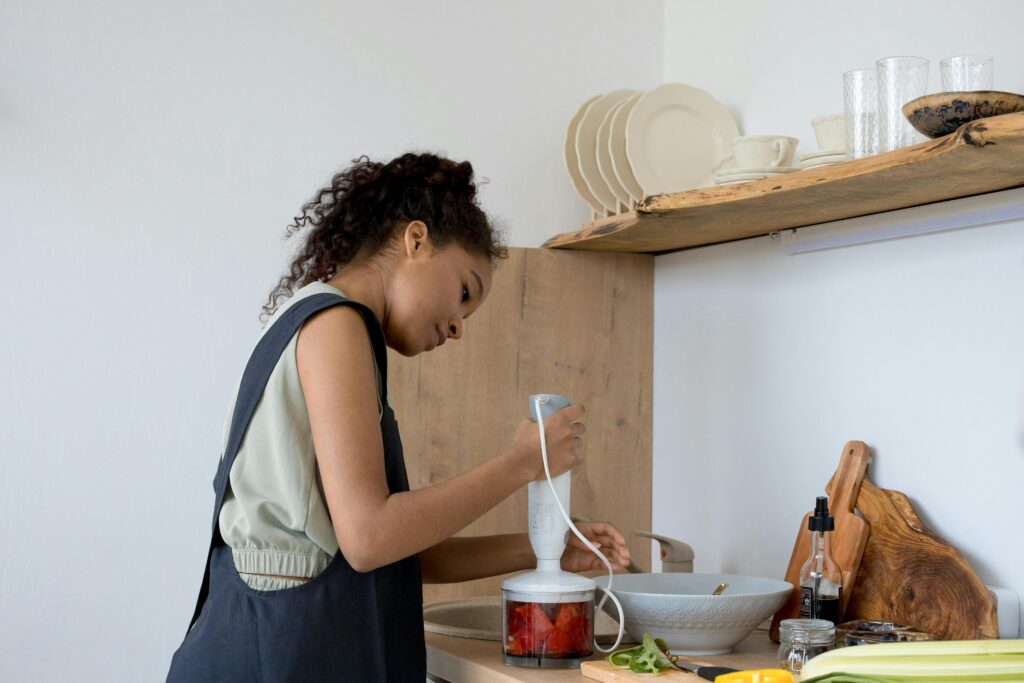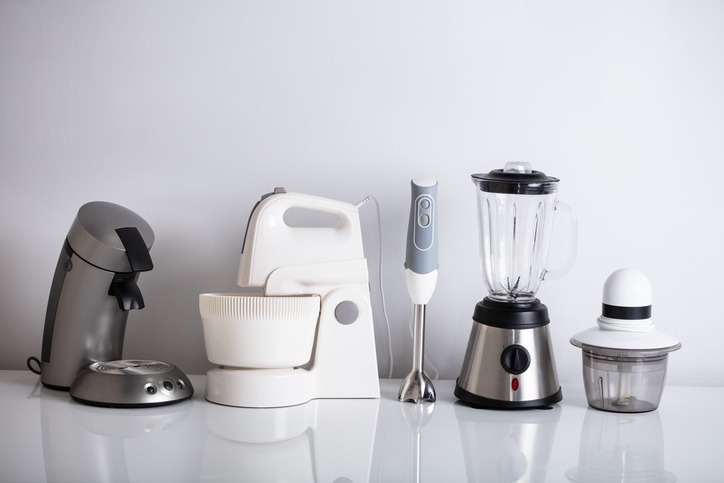You might not be aware that the journey of blenders began almost a century ago, with a humble machine designed to make soda fountain drinks. Since then, the evolution of blenders has mirrored the changes in our culinary practices and lifestyle needs, transforming from simple devices to complex machines capable of more than just pureeing fruits and vegetables.
As you consider the myriad of blenders that have graced kitchens over the decades, you’ll find yourself intrigued by how each innovation reflects broader trends in food, technology, and society. This exploration promises to unveil the fascinating role blenders have played in shaping our eating habits and culinary creativity, leaving you curious about what the future holds for this indispensable kitchen gadget.
The Early Innovations
The journey of blenders kicked off in 1922 when Stephen Poplawski invented the first one, marking a pivotal moment in kitchen technology. Imagine standing in front of a soda fountain back then, watching a device whirl and mix your drink to perfection. That’s where blenders found their first home, revolutionizing drink mixing at soda fountains. Poplawski’s invention, initially crafted to blend malted milk drinks, laid the groundwork for what would become an indispensable kitchen appliance.

Fast forward a decade to 1932, and you’ve got Hamilton Beach stepping into the scene. They introduced the first electric blender, a game-changer for home kitchens. Suddenly, you weren’t just watching blenders in action at your local soda fountain; you’d the power to mix, blend, and whip up concoctions right in your own kitchen. Hamilton Beach’s innovation made blending more convenient and accessible, opening up a whole new world of culinary possibilities for everyday cooks. These early innovations by Poplawski and Hamilton Beach set the stage for the blenders we know and love today, transforming kitchen counters everywhere.
Mid-20th Century Breakthroughs
Building on early innovations, the mid-20th century brought significant breakthroughs in blender technology, making these appliances more accessible and essential in kitchens worldwide. The era was defined by notable design improvements and a significant market expansion, fueled by rising consumer demand and intense industry competition.
In 1937, Waring’s introduction of the first blender designed for home use was a game-changer. Suddenly, you could enjoy the convenience of blending without needing pro-level equipment. This innovation not only made blending more accessible but also marked a pivotal moment in kitchen appliance evolution.
By 1949, Vitamix upped the ante by releasing the first commercial blender, catering specifically to professional kitchens and foodservice establishments. This move not only highlighted the growing versatility and importance of blenders but also underscored the industry’s responsiveness to consumer needs and professional demands.
Here’s a quick look at the milestones that shaped this era:
| Year | Milestone | Impact |
|---|---|---|
| 1937 | Waring’s home blender | Made blending accessible |
| 1949 | Vitamix commercial blender | Catered to professional needs |
| Mid-20th Century | Popularity surge | Marked by design improvements |
| – | Market expansion | Driven by consumer demand, industry competition |
These breakthroughs laid the foundation for the diverse range of blenders available today, transforming them from luxury items to kitchen essentials.
The Rise of Multifunctionality
Modern blenders have evolved far beyond mere blending, now offering features like chopping, pureeing, and even heating your ingredients with ease. This leap in blender versatility means you’re no longer juggling multiple gadgets to prep your meals. Imagine making your morning smoothie, chopping veggies for lunch, and pureeing soup for dinner, all with the same device. That’s kitchen efficiency at its best.
With the addition of specialized attachments, these appliances have become even more indispensable. You can grind spices to perfection or knead dough without breaking a sweat. The clutter of single-purpose tools is a thing of the past, as these multifunctional blenders take center stage in your culinary adventures.
Moreover, pre-programmed settings simplify the cooking process further. Whether you’re crushing ice for a batch of margaritas or creating velvety soups, there’s likely a button for that. This adaptability caters to both the novice home cook and the seasoned chef, offering a range of functions to explore.
In essence, the rise of multifunctionality in blenders has transformed them into versatile powerhouses. They streamline kitchen tasks, reduce appliance clutter, and open up a world of culinary possibilities. It’s a testament to how far we’ve come in making cooking both efficient and enjoyable.
Technological Advances in the 21st Century
In the 21st century, blenders have undergone significant technological advancements, reaching speeds up to 30,000 RPM and incorporating features like digital interfaces and noise reduction for enhanced user experience. You’ve seen these kitchen workhorses evolve from simple mixing devices to high-powered machines capable of liquefying even the toughest ingredients in seconds. Thanks to advanced blade designs, you’re now achieving smoother blends, whether you’re making your morning smoothie or pureeing soups.
The introduction of digital interfaces has been a game-changer. You can precisely control blending speeds and times, ensuring your recipes turn out perfectly every time. It’s like having a professional chef’s precision at your fingertips, without the guesswork.
Moreover, the era of smart blenders has arrived. Equipped with Wi-Fi connectivity, these blenders offer you the convenience of accessing a myriad of recipes online and controlling your blender remotely. Imagine starting your blender while you’re still in bed, getting a head start on your day. This level of connectivity has transformed the humble blender into a smart kitchen assistant, revolutionizing how you interact with your appliances and making your culinary ventures more efficient and enjoyable.
Future Trends in Blender Design
As we look to the horizon of kitchen technology, future blender designs promise to revolutionize your culinary experience with cutting-edge innovations. Imagine a world where your blender understands your preferences and adjusts its settings accordingly, thanks to AI integration. This isn’t just a fantasy; it’s the direction in which we’re headed. You’ll be able to personalize your food preparation like never before, with blenders that learn from your habits and suggest recipes based on your taste and nutritional needs.
Moreover, the shift towards sustainable materials signifies a greener future for kitchen appliances. You’ll be contributing to the planet’s health every time you whip up your favorite smoothie or sauce. And with modular components, your blender won’t just be eco-friendly; it’ll be designed for longevity, allowing for easy repairs and upgrades rather than replacements.
But that’s not all. Imagine strapping on a VR headset to get a first-person view of your blender’s contents, guided by virtual reality interfaces. This immersive cooking experience will be complemented by advanced sensors and cameras, offering real-time feedback to perfect your culinary skills. The future of blending is bright, and it’s tailored to make your kitchen adventures more efficient, sustainable, and enjoyable.
Conclusion
You’ve witnessed the incredible journey of blenders from their simple beginnings to the high-tech marvels they’re today. From Stephen Poplawski’s initial invention to the latest in smart, energy-efficient designs, blenders have continuously evolved to meet your changing needs and preferences. As we look forward, expect even more innovative features and designs that’ll further revolutionize your kitchen experience, making healthy living and creative cooking easier and more enjoyable.
The evolution of blenders is far from over; it’s just getting started.




